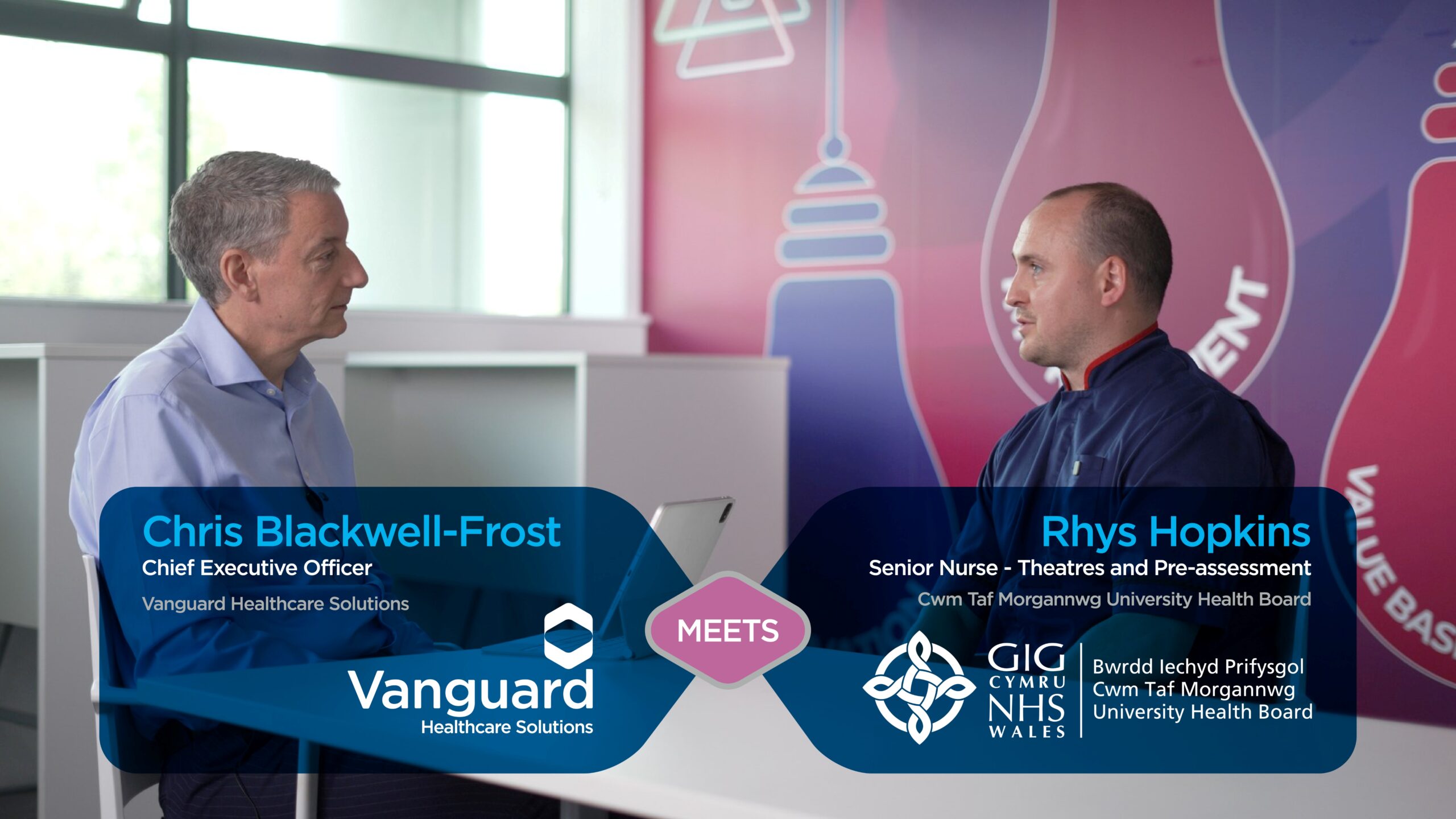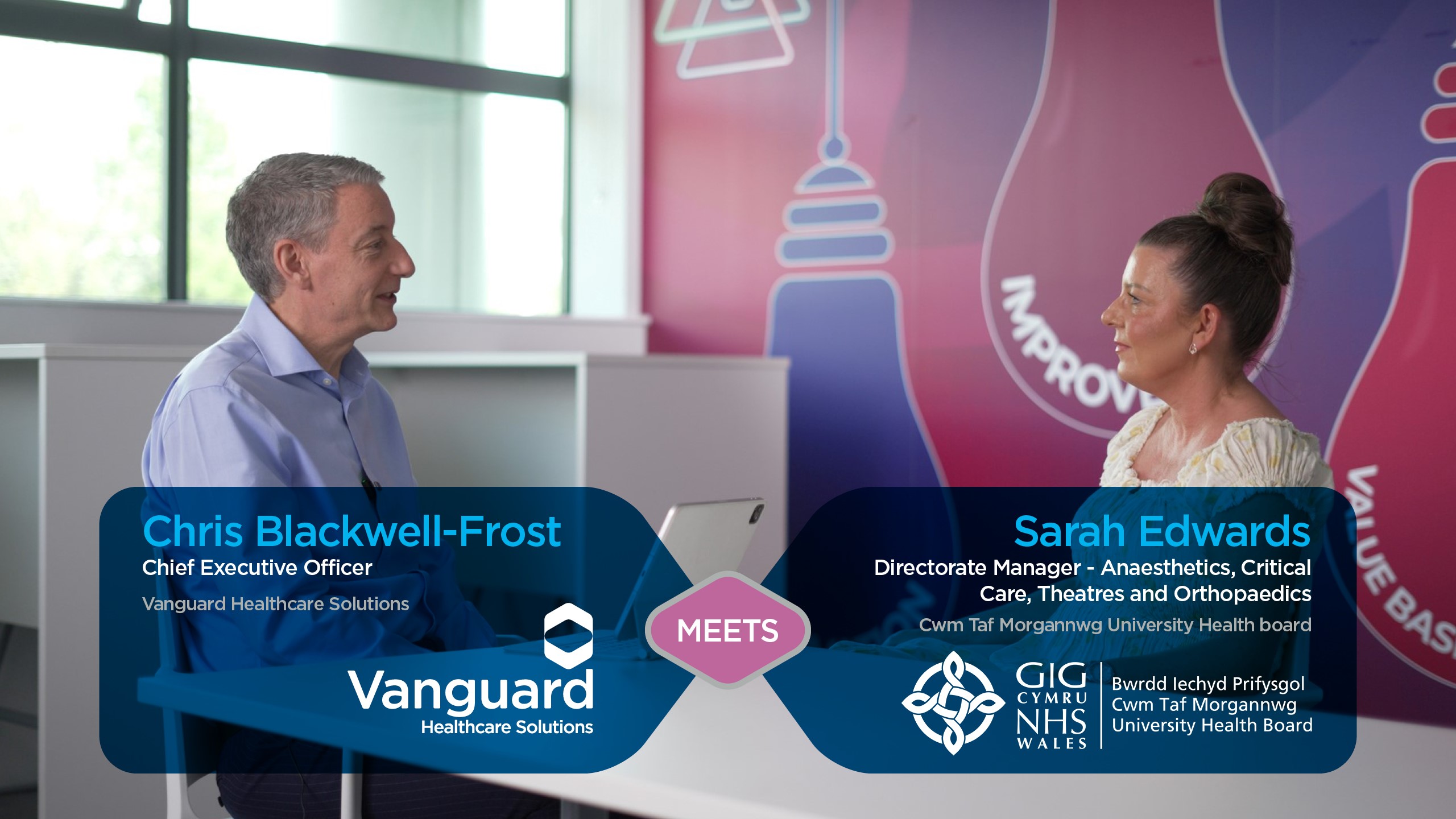Det ser ud til, at du er i USA
Vi har et andet websted (www.q-bital.com), som passer bedre til din placering
En almindelig forforståelse er, at fleksible sundhedsfaciliteter er trange. Men selvom de måske har et mindre fodaftryk end et hospitals eksisterende teatre og passer bag på en lastbil, er mobile operationsstuer udvidelige og overraskende rummelige indeni. Hvor større anlæg eller hybrid operationsstuer er påkrævet, kan en modulopbygget facilitet af næsten enhver størrelse laves skræddersyet til individuelle behov.
Vores mobile og modulære enheder er også designet med effektivitet og patientflow i tankerne. Faciliteterne er omhyggeligt gennemtænkte for at sikre, at der er tilstrækkelig plads til nøgleaktiviteter i både de primære procedurerum og i de understøttende områder.
Selvom det er rigtigt, at hjælpepladsen ofte er begrænset inden for mobile faciliteter, kan en forbindelse normalt oprettes for at forbinde med den eksisterende afdeling i hovedhospitalets bygning, eller den kan kombineres med modulære enheder for at skabe et selvstændigt kompleks. Modulbygninger kan rumme omklædningsfaciliteter og personalehvilepladser samt en reception, et patientventeområde og toiletfaciliteter - eller endda en komplet afdeling - hvilket skaber et selvstændigt kompleks.
Selvom mobile og modulære enheder er præfabrikerede og kan sættes på plads hurtigt, betyder det ikke, at kvaliteten er gået på kompromis. Mobile teatre er sofistikerede faciliteter. De tager lang tid at bygge, og de gennemgår strenge tests, før de stilles til rådighed for kunderne. Mellem kontrakterne bringes enheder tilbage til det nødvendige vedligeholdelses- og renoveringsarbejde, og for at udføre kontroller.
Mobile faciliteter er bygget til at holde; en af Vanguards operationsstuer, der blev brugt til større ortopædiske ledoperationer, lå på samme sted i mere end 10 år som en integreret del af hospitalets ejendom. En anden, der blev brugt til fodterapi og håndkirurgi, så kontrakten forlænges flere gange med over 5.200 procedurer udført i alt på anlægget i løbet af de 10 år, den var på plads.
Tilsvarende betyder det faktum, at modulære faciliteter kan bygges og installeres hurtigt, ikke nødvendigvis, at kvaliteten går på kompromis. Faktisk kan det være det modsatte - at producere faciliteterne i et fabrikskontrolleret miljø betyder, at det er nemmere at sikre byggekvalitet og overholdelse af standarder, og enheder inspiceres grundigt, før de forlader fabrikken. Selvom de tilbydes som en midlertidig løsning, er de designet til permanent brug. Modulanlæg er robust opbygget af stålrammer med betongulve, hvilket giver en forventet levetid på over 60 år, hvor faciliteterne kan genanvendes og flyttes flere gange i overensstemmelse med skiftende behov.
Der er stor forskel på mobile og modulære operationsstuer og bærbare bygninger, der bruges som boliger til byggeprojekter eller midlertidige klasseværelser.
Midlertidige operationsstuer, endoskopi-suiter og steriliserings- eller dekontamineringsenheder er komplekse faciliteter, som er specielt designet til deres formål. De er ofte bygget efter samme standard som permanente sundhedsbygninger, kommer med funktioner som moderne belysning og specialudstyr, der er nødvendigt for at udføre procedurerne. I nogle tilfælde kan udstyret i enheden være mere højteknologisk end på hovedhospitalet.
Faciliteterne er designet til at være højtydende, sikre og i overensstemmelse med alle relevante regler fra starten. Teatre har specialistsystemer ombord, såsom HEPA-filtreret luft, der er i overensstemmelse med EU Grade C, behandlet vand og integrerede MGPS-systemer, hvor det kræves.
Inden kontraktstart udføres et komplet validering og idriftsættelsesprogram, som omfatter luftkvalitetstest, vandvalidering, elektrisk test og validering af eventuelt udstyr, for eksempel vaskemaskiner og sterilisatorer. Faciliteterne bliver også løbende vedligeholdt og serviceret.
Selvom det kan være mindre end hospitalets teaterafdeling, er indersiden af et midlertidigt teater designet til effektivitet, og det interne miljø overvåges nøje. Teatrene kommer med aircondition og er designet til at være behagelige for både patienter og personale.
Det er almindeligt at høre fra personale og patienter, at de er overraskede over, hvor rummeligt og luftigt anlægget føles, når det er indenfor. Feedback modtaget tyder også på, at enhederne er lysere end forventet.
Steriliserings- og dekontamineringspersonale, der arbejder i vores CSSD-enheder, kan også godt lide, at rummet er godt indrettet til effektiv instrumentflow, og at enheden har naturligt lys og vinduer udadtil – noget af en luksus, da steriliseringsafdelinger ofte er placeret i kælderen. .
Der kan mangle personalevelfærdsområder, såsom brusere, hvile- og omklædningsrum og kaffefaciliteter, men der er altid mulighed for at koble anlægget til enten hovedsygehuset eller et separat modul, der kan levere dette. En modulopbygget facilitet kan designes til hospitalets nøjagtige specifikationer.
Personalet kan være betænkelig ved at behandle patienter i et område væk fra hovedhospitalets bygning, hvor der er øjeblikkelig støtte og hjælp til rådighed i tilfælde af en nødsituation. Medicinske nødsituationer diskuteres dog, og handlingsplaner overvejes på forhånd. Processer for patientnødsituationer, evakueringer og andre uplanlagte hændelser, såsom en brand, aftales og indarbejdes i planerne, før nogen patienter kommer til anlægget.
Når en ny kontrakt er underskrevet, vil Vanguard afholde et operationelt leveringsmøde, hvor arbejdspraksis og ansvar for projektet aftales, hvilket gør det muligt for alle involverede parter at foretage passende forberedelser. En fuldstændig projektplan vil også blive udsendt for at begrænse påvirkningen af installationen og vil blive underskrevet af begge parter forud for aktivitet på anlægget.
Det faktum, at faciliteten ligger fjernt fra resten af hospitalet, kan også være en bekymring, men at have en selvstændig facilitet væk fra hovedområderne på hospitalet, hvor patienter kan behandles i isolation, har vist sig at være en fordel under pandemien.
Tilsvarende er der ofte bekymring omkring patientrejsen. Afhængigt af hvor enheden er placeret, kan dette være et problem, men Vanguard kan arbejde sammen med hospitalets godser og kliniske teams for at finde den bedst egnede løsning til transport af patienter til og fra anlægget.
I tilfælde, hvor hovedoperationsafdelingen er meget langt fra et eksternt indgangssted, eller for dagkirurgiske tilfælde, kan det være en fordel at skabe et selvstændigt lille kompleks eller 'besøgshospital', bestående af et eller flere teatre sammen med moduler, der indeholder alle nødvendige patient- og personaleområder; og måske en mobil eller modulopbygget afdeling.
Det betyder, at patienter kan indlægges direkte på anlægget, få deres procedure, komme sig og derefter blive udskrevet direkte fra anlægget til sidst, alt sammen uden at komme ind på hovedhospitalet – noget som har været en vigtig fordel under Covid.
Derudover kan det at have patienter, der kommer direkte til enheden, føre til en mere effektiv udnyttelse af tiden i biograferne, da tiden med at vente på, at patienterne bliver overført fra andre områder af hospitalet, skæres ned. Der kan opnås effektivitetsgevinster, når alt er tættere på.
Forståeligt nok kan personalet blive bekymret over at arbejde i et nyt miljø eller med ukendt udstyr og væk fra andre kolleger. At flytte til en anden facilitet på midlertidig basis vil uundgåeligt betyde, at kirurger til en vis grad skal ud af deres komfortzone.
Så vidt det er praktisk muligt, vil rutiner og arbejdsgange i det midlertidige anlæg blive tilpasset de allerede gældende arbejdsmetoder. Vanguard tilbyder introduktionssessioner for personalet og fuld træning på ukendt udstyr.
Med skræddersyede modulløsninger er der mulighed for, at hospitalets faciliteter og kliniske teams kan være med til at skabe specifikationer for det midlertidige anlæg, som kan hjælpe med overførsel af eksisterende operationer til den midlertidige enhed. Det fungerer også den anden vej - hvor et anlæg bliver brugt til at skaffe kapacitet under et større renoverings- eller nybygningsprojekt, kan et modulkompleks bruges til at afprøve nye rutiner og arbejdsmetoder som forberedelse til flytningen til det nye anlæg.
Mobile sundhedsfaciliteter er designet specifikt til at kunne forbindes med eksisterende hospitalers egen infrastruktur hurtigt og nemt. Vores centrale steriliseringsafdelinger kommer for eksempel med indbygget integration til kundens eget track-and-trace-system. Men mens den samme operationsstue eller anden klinisk facilitet kan flyttes mellem hospitaler og betjene forskellige sundhedsudbydere, er der ofte behov for en vis tilpasning.
Alle hospitaler er forskellige, og hver kunde har forskellige behov og forskellige måder at arbejde på. Vanguard arbejder i tæt samarbejde med hver enkelt kunde, og baseret på vores store erfaring med at arbejde med sundhedsudbydere verden over, sigter vi efter at opnå den optimale konfiguration og opsætning i hvert enkelt tilfælde.
Der gennemføres en grundig undersøgelse af stedet, og der gives forslag til den bedste vej frem med hensyn til en række spørgsmål, herunder forsyningsforbindelser og integrationer med IT og brand- og sikkerhedssystemer. Nogle gange kan en modulbygning, bygget skræddersyet til kundens nøjagtige krav, være svaret.
Selvom det sjældent giver større bekymring for facility managers, kan dette i nogle tilfælde være et vigtigt spørgsmål. For eksempel når det er placeret på et meget synligt sted for offentligheden, såsom nær hovedindgangen, eller hvor det vil blive overset af private boliger.
Den mobile enhed passer muligvis ikke ind i udseendet af resten af hospitalet, afhængigt af hvordan resten af stedet ser ud, og om der er andre midlertidige bygninger på den. Vores mobile enheder er rene og lyse og kommer med en nederdel til at dække området under enheden, så den ser mere permanent ud. Enheder kan tilpasses med ramper, trin, gangbroer og yderligere bygninger, så de passer til udseendet på resten af hospitalet.
En modulbygning eller et kompleks kan laves, så det ser ud, som kunden ønsker det. Type, materiale og farve på det ydre, samt gulvbelægning og gardiner på indersiden, kan tilpasses efter behov, så de passer til det overordnede udseende og fornemmelse på det eksisterende hospital.
Sidst, men ikke mindst, er der nogle gange en bekymring for, at patienter vil være uvillige til at blive behandlet på en midlertidig enhed. Det er vores erfaring, at patienter generelt er glade for at blive behandlet på ethvert passende sted.
Faktisk har oplevelsen været den modsatte under pandemien - patienter har været gladere for at komme til en selvstændig facilitet uden at skulle gå ind i hovedhospitalets bygning. Dette har betydet, at selv højrisikopatienter har været i stand til at deltage i planlagte elektive procedurer eller scanninger.
Nøglen til at berolige patienter og styre deres forventninger er effektiv kommunikation. Patienter accepterer i det hele taget at modtage behandling i enhver type bygning, men det er vigtigt at holde dem orienteret. Den måde, hvorpå denne information videresendes til patienter, er også vigtig; Det er klart, at patienterne vil være mindre tilfredse, hvis de henvender sig til den sædvanlige operationsafdeling og derefter får besked på at gå 'bagtil' til den midlertidige facilitet udenfor på parkeringspladsen.
Kommunikation før ankomst er mest effektiv, når den beskriver, hvor bygningen er placeret inden for hospitalets campus, og der er tydelig, kortfattet skiltning til den midlertidige bygning. I de fleste tilfælde er patienterne glade for, at hospitalet har taget skridt til at øge kapaciteten, så ventetiden på deres indgreb kunne reduceres.
Samlet set er den tilbagemelding, vi får fra både personale og patienter, overvældende positiv. Vi hører nogle gange fra klienter, at de i starten var usikre på, hvor godt det ville fungere, og at personalet var ængstelige, blot for at opdage, at brug og arbejde i enheden har overgået deres forventninger. De første bekymringer handler mest om 'frygten for det ukendte'.
Som allerede nævnt er kommunikation ekstremt vigtig for at give tryghed; om anlæggets fysiske egenskaber, compliance og kvalitet, samt ud fra et klinisk perspektiv. Ikke kun i forhold til kommunikationen med patienterne – kommunikationen mellem faciliteterne og det personale, der skal arbejde i det nye anlæg, er også vigtigt.
Et andet nøgleord er 'fleksibilitet'. Et midlertidigt sundhedscenter er ikke bare en bygning - det giver en fleksibel løsning på et kapacitetsproblem. Vanguard Healthcare Solutions har mere end 20 års erfaring med at tilpasse sig forskellige klienters unikke behov, og som sådan kan bekymringer ofte imødekommes og ofte findes en løsning, så længe de kommunikeres på et tidligt tidspunkt.
Tag kontakt hvis du gerne vil diskutere eventuelle bekymringer eller finde ud af mere om fleksibelt sundhedsvæsen.



Vanguard Healthcare Solutions
Unit 1144 Regent Court, The Square, Gloucester Business Park, Gloucester, GL3 4AD

Vi har et andet websted (www.q-bital.com), som passer bedre til din placering